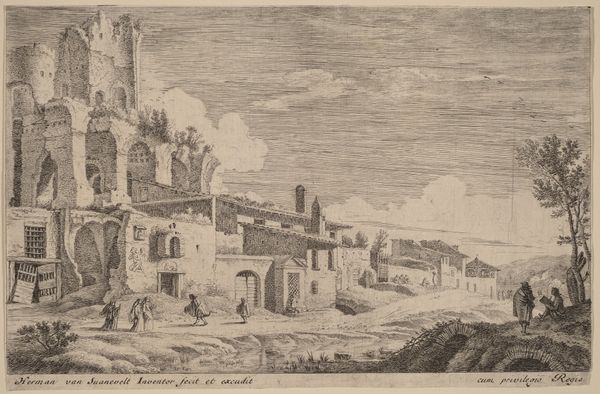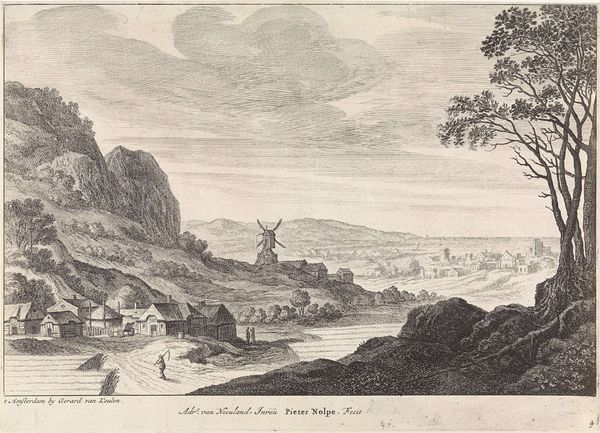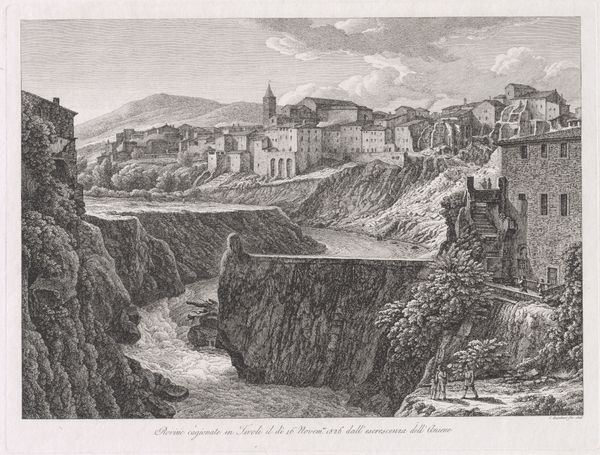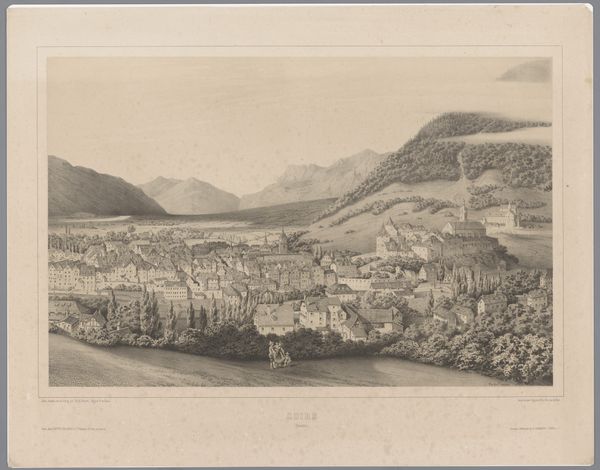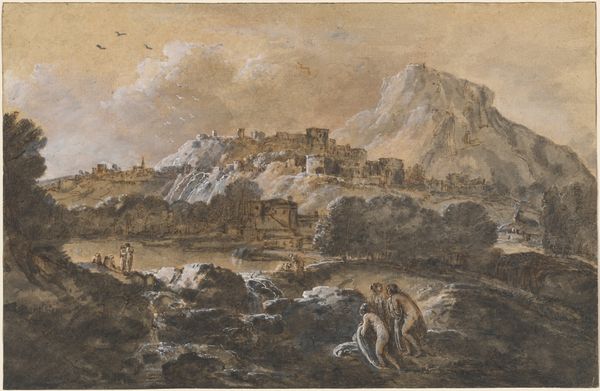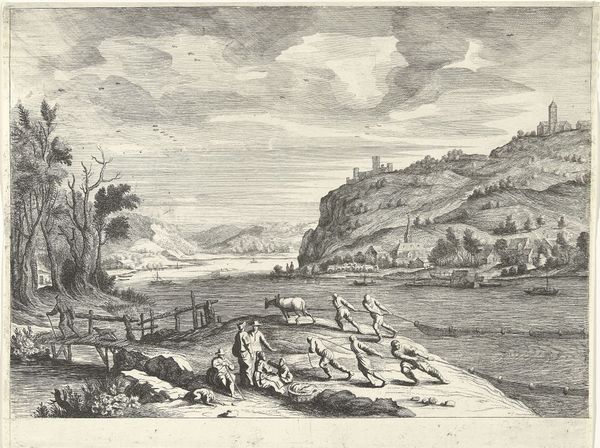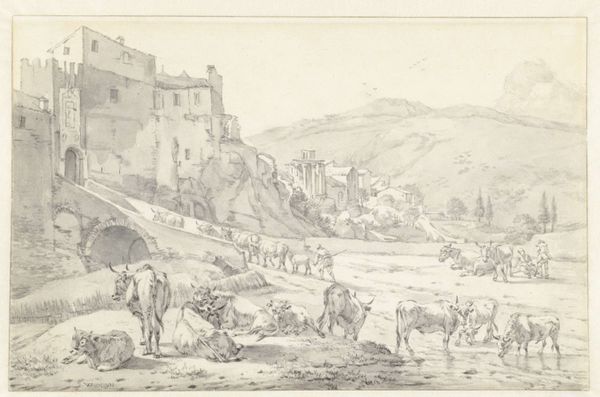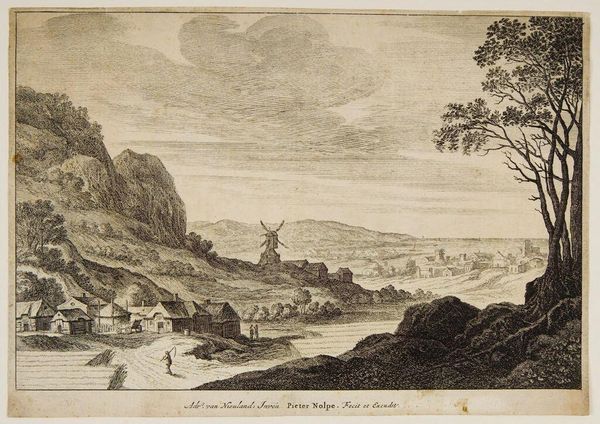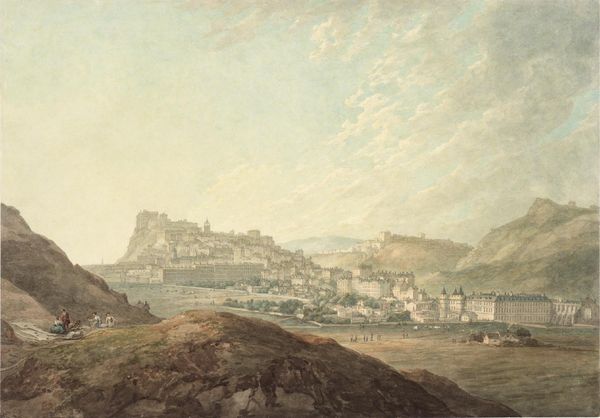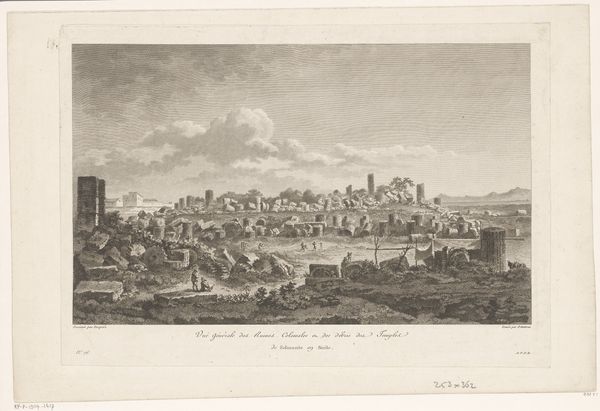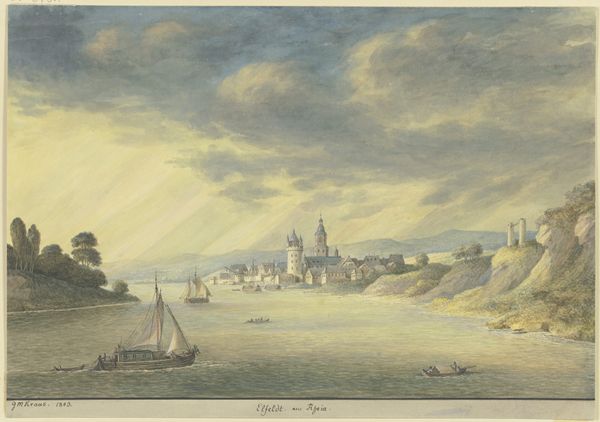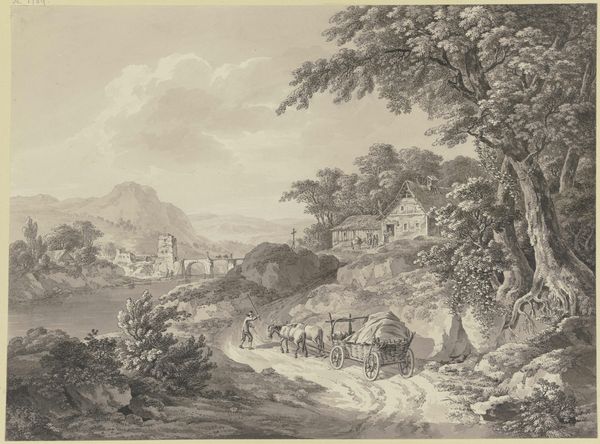
drawing, watercolor, pencil
#
drawing
#
pencil sketch
#
landscape
#
charcoal drawing
#
watercolor
#
pencil drawing
#
romanticism
#
pencil
#
cityscape
#
watercolor
Dimensions: height 346 mm, width 528 mm
Copyright: Rijks Museum: Open Domain
Curator: What a striking composition. I’m immediately drawn to the monochrome palette – the atmospheric use of washes and line. Editor: It feels a little desolate, wouldn’t you say? Like a ghost city rendered in sepia tones. There’s a palpable sense of melancholy. Curator: Well, let's delve into it a bit. What you're seeing is "De stad Enochia," a pencil and watercolor drawing created by Charles Marie Bouton sometime between 1791 and 1853. Editor: Fascinating! It certainly aligns with Romanticism’s interest in ruins and the sublime power of nature. One could view it as a commentary on civilization's impermanence. Curator: Agreed. Bouton clearly utilizes accessible and available materials. Notice the paper – likely mass-produced. The labor involved speaks volumes. These weren't rarefied, expensive pigments, or fancy, hand-made paper reserved for "high art," but the humble tools of observation and record. He documented the city in subtle watercolor and delicate, but determined pencil. It allows for great detail. Editor: And the absence of color actually enhances the emotional weight. It highlights a sense of time passing, the potential loss or degradation of structures both physical and societal. Given the period, you wonder what socio-political shifts informed Bouton’s perspective. It also leads me to think about gender dynamics. A cityscape lends itself to the artist who might be limited to certain subject matter because of gender or class limitations, for example. How do structures shape experience and confine us? Curator: Interesting point. There is something about the structural confines of the city that definitely speaks of control. He masterfully conveys depth and scale here with very economical methods. Look at the mountains receding in the background—just the faintest touch of wash. It also evokes ideas of consumption, and the growing industry in art, the use of art as a means to illustrate and educate. Editor: I'm now reading the light and shadow as more than just representational; the looming clouds suggest impending change, maybe social unrest. Curator: Yes! Overall, I find his art production incredibly insightful regarding both materials and means. Editor: And for me, it underscores the role of art in reflecting and challenging our understanding of power, history and lived experience. A reminder that even ruins hold stories waiting to be unearthed.
Comments
No comments
Be the first to comment and join the conversation on the ultimate creative platform.

